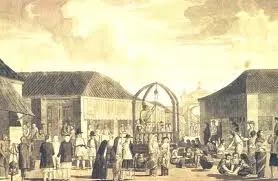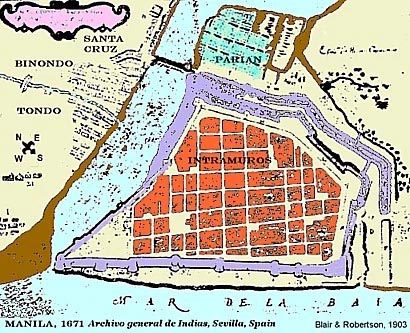The famous Chinese Volunteer Fire Brigade was organized mainly because of two fires that almost devastated Chinatown in Manila – the 1962 fire in Divisoria and the 1968 fire that started on Ongpin Street. These made the Chinese community realize they had to rely on themselves and get organized to effectively fight the fires they had encountered so often.
It is interesting to note that fire is a frequent occurrence in Chinatown not just in modern times. During the Spanish period, there were several fires that destroyed the Parian.
In the Philippine Social Science Review (2012, 64.2), an article by Ranly M. Madrid of the University of the Philippines Visayas in Iloilo City titled “A History of Disastrous Fires in Philippine Chinatown” discussed “the history of the fires in Parian that aims to show how fire management helped preserve social order in the capital city.” Madrid provided data about fires that occurred in the Chinese community from the 16th century to the 18th century.

The first Parian was built on the marshy southern banks of the Pasig River in 1581. Unfortunately, it was consumed by fire on Jan. 30, 1583.
Antonio Morga in 1609 wrote: “In the time of Diego Ronquillo, a fire began in the church of San Agustin around mid-day when the doors of the church were closed; it became so destructive that in a few hours the city which was then built with wood was consumed.”
Alberto Santamaria, O.P., said, “The fire occurred at 3 p.m. on Jan. 30, burning several houses in the silk street.”
The Chinese built the second Parian in what is now the site of San Juan de Letran. The structures were made of straw, and a fire in 1588 burned them to the ground. The Parian was transferred to Binondo in 1594. However, a fire destroyed the Binondo Parian in 1597.
The biggest fires occurred in the 17th century. The first was associated with the 1603 Chinese uprising, which resulted in the massacre of about 23,000 Chinese in Manila and its environs.
In 1628, a fire burned down 800 Parian houses. Wu Chinghong cited a personal account of Hernando Estrada: “Fire began at 1:00 at night on March 13 in Parian, where more than 12,000 Chinese live outside the wall of the city of Manila (Intramuros). Within five hours, all was razed.”
In 1639, a Chinese revolt in Calamba, Laguna spread to Manila. The rebels crossed Pasig River to Binondo and torched its church. As buildings made of light materials in Binondo burned, the survivors sought refuge in the church and convent made of stone.
In 1642, a fire wiped out Parian. A friar described it vividly: “One night, when they were holding one of their funeral services in honor of their dead, they used so many candles and burned paper and other things pertaining to magic that the houses caught fire and the fire spread with the aid of the north wind and became so powerful that in a short while, the greater part of Parian was razed and much property was lost.”
Then, during the British Occupation of Manila (1762-1764), after the surrender of Manila, the British troops pillaged and burned more than 400 houses in Binondo and Santa Cruz.
All in all, there were eight fires that occurred in Parian and Binondo from 1583 to 1762.
